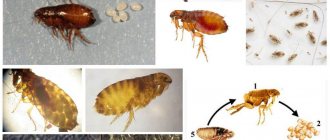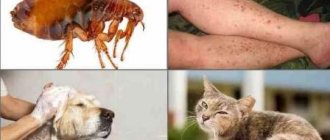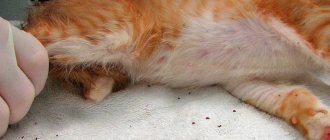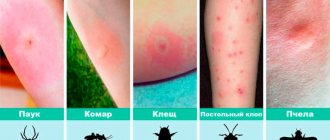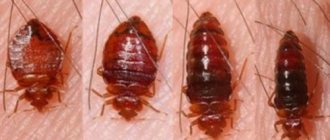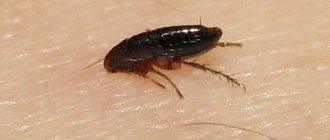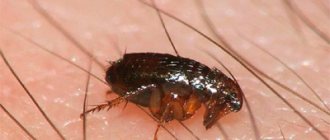Prevention
The best way to reduce your chance of contracting SARS-CoV-2 is to prevent transmission. Doctors recommend:
- Hand washing
: Wash your hands with soap and running water for at least 20 seconds. If running water is not available, use a hand sanitizer containing at least 60% alcohol. - Do not touch your face, eyes, nose or mouth.
- Cough or sneeze into a tissue or the inside of your elbow
. This limits the number of respiratory droplets that enter the air. Dispose of used tissues in designated containers and wash your hands for at least 20 seconds afterwards. - Physical distancing
: Avoiding close contact with other people reduces the risk of exposure to respiratory droplets that may contain SARS-CoV-2. Stay 2 meters away from other people, especially in public places. - Increase cleaning and disinfection: Clean frequently touched surfaces and items with soap and water. This includes objects such as:
- door handles and locks
- faucets and sinks
- light switch
- drawer handles
- mobile phones and tablets
- keyboards and mice
- tables and desks
- Wear a mask
: A person can transmit SARS-CoV-2 even if they do not feel sick. Wearing a mask that covers your mouth and nose reduces the chances of this happening.
People should wear cloth face coverings in public places where physical distancing is difficult to maintain. This will help slow the spread of the virus from people who don't know they have it, including those who are asymptomatic.
What parts of the body are most often bitten by insects?
Fleas are blood-sucking insects that often live on animals and humans. They have a flattened body covered with bristles and spines. There are many species included in this family. Dimensions rarely exceed 4 mm. The bites of these parasites are very painful and leave large marks on the body of humans and animals. In addition, they are carriers of tick-borne encephalitis, plague and anthrax.
Fleas often bite people, falling on them from the bodies of animals. However, there is a separate type of human parasite, which is unpretentious. Their main difference is size. The human flea is significantly larger.
Fleas most often bite people on their legs and arms. The damaged areas are mainly located on the lower legs and feet. In addition, they sting places with thin skin: the skin on the head, in the armpits and near the genitals, on the neck. Depending on the species, other areas of localization of bites are possible.
What to do if an insect bites you
Under no circumstances should you self-medicate or remove the body using improvised means. The flea is located next to the blood vessels, and if it is accidentally crushed by clumsily pulling it out, complications cannot be avoided. The female can only be removed surgically. The surgeon removes the insect with tweezers or sterile needles, treats the wound and bandages the operated area. If help is provided on time, the outcome is favorable.
So the best thing to do on vacation is to go to the hospital with health insurance.
The habitat of such insects is not far from human habitation, near water and farmland. They wait on the leaves of small bushes and grass, in the sand on the beach, in the ground near creeks.
Infection occurs when a tourist walks barefoot on beach sand, squats, or walks through thickets near water. The parasite affects the feet, legs, groin area and back. Often he chooses a place under the nail. There are many capillaries for easy obtaining of food.
The sand flea is very small in size and almost impossible to see. The bite is not felt; its location can only be discovered after a few hours.
Prevention and precautions
If you follow simple rules, the risk of infection with the parasite is significantly reduced. First of all, avoid wild beaches. The latter are a real breeding ground for sand fleas and other equally dangerous pests.
How to protect yourself from the parasite:
- Avoid going to the beach in the early hours and at sunset.
- Treat your skin with protective insect repellent creams after each bath.
- Wear socks and closed shoes.
- Maintain cleanliness and change bed linen regularly.
- After walking, wash your feet in soapy water.
Washing feet
Important! Before traveling to an exotic resort, you must get a series of vaccinations. Depending on the country, their list may vary. The doctor and tour operator should be aware of this.
Treatment of vertebral hernia with bee stings
If hundreds of diseases are treated with bee venom, from scars to multiple sclerosis, then treating a vertebral hernia with bee stings should not be surprising in principle. Even those who have not yet ventured into such an unusual procedure have probably already used ointments containing apitoxin and are convinced of their effectiveness. Accordingly, you can start apitoxin therapy - this is the name of the method of treatment using a bee sting. In addition to treating a hernia, bee stings help alleviate the symptoms of osteochondrosis, as they relieve local inflammation and activate blood flow to the damaged area. As for intervertebral hernia, apitherapy can relieve spasms and blockages in the muscles surrounding the disc; in addition, as a result of relaxation, it becomes possible to resume all metabolic processes in damaged tissues. It is the ability of bee venom to fight the degenerative process in the vertebrae that makes the procedure effective and efficient.
Treatment of vertebral hernia with bee stings is carried out using the method of acupuncture, that is, applying insects to special biologically active points on the back. In addition to the fact that the poison affects bone tissue, it quickly penetrates the adrenal cortex and activates the production of anti-inflammatory hormones, thus providing not so much a local analgesic effect, but a deep therapeutic effect.
In conclusion, we should add some interesting facts that will help rehabilitate the bee sting in the eyes of readers.
- A mandatory product included in the diet of astronauts is honey, and the space first aid kit includes topical preparations containing apitoxin.
- Bees are indicators of air pollution. If you go out into nature, where trees and flowers are blooming and you don’t see a single bee, then the environmental situation in this place is unfavorable.
- Bees circling around the hive (swarm bees) will not sting a person; this is done by “workers”, that is, those insects who are sent to collect nectar.
- The queen bee never stings a person; she reserves her venom for possible rivals - contenders for the “throne”.
- There are bees - customs officers, who are specially trained to recognize the smell of narcotic and explosive substances. In addition to the fact that several bees learn this action, they pass on “knowledge” to their relatives in the hive.
- According to legend, the founding father of medicine, Hippocrates, who not only sang the healing properties of honey and bee venom, but was also keen on beekeeping, lived to be 107 years old.
Where do sand fleas live?
Parasites can be found in various tropical countries. However, the largest number of insects is concentrated in areas that belong to the Caribbean. These are Cuba, Trinidad, Dominican Republic, Africa. Beach fleas can be found even in unexpected places, where people do not expect to find them.
Sand fleas in Sri Lanka are larger in size. They often bite people because they live almost everywhere. It is difficult to avoid encounters with parasites, so try to avoid bare areas of the body.
In Thailand, such parasites have literally infested the country. Sometimes sea fleas in Thailand ruin your holiday, because it is incredibly difficult to avoid encountering them. There are also many of them in India, because there is a suitable environment for their reproduction. There are sand fleas in Vietnam, but they do not cause much discomfort to tourists. Fleas are concentrated in rural villages, as well as in polluted cities, where there are suitable conditions for their reproduction.
There are sand fleas in Cuba that plague the local population. They become active when the weather is hot. At such times, it is very difficult to walk through areas with dense vegetation or relax on the beach without encountering insects. Local residents have long learned to deal with problems with the help of properly selected clothing and sprays, which tourists also need to do.
The question of where sand fleas live does not have a clear answer. They live under stones, in the floorboards of private houses, on beaches in the sand. Insects parasitize goats, dogs, cats and rats, as well as other animals. It is very easy for them to find a victim for themselves, which will become their main source of food. Any African flea or parasite found in another region can migrate to your clothing.
Reproduction
The process of insect copulation can last several hours. Females have a uterus and ovaries. Males have a sexual organ called the sex claw. During mating, the female is on the back of the male and draws the sperm into herself. It takes about 15-20 minutes for the genetic makeup to reach the uterus.
The only condition for successful conception is access to food. For this reason, on the eve of intercourse, the female feeds on the blood of the owner so that she has enough strength to mate. Immediately after the process, the individual also eats; food gives it energy and accelerates the process of egg maturation. If conditions are favorable, a flea can lay several groups of larvae per day. More often it is removed from the wound before birth.
Pest development cycle
The development cycle of the parasite has 4 stages:
- egg;
- larva;
- chrysalis;
- adult.
2 days after conception, the female is ready to lay eggs. Most often, insects do this on the body of an animal, less often on a person. A flea can lay from 30 to 50 eggs per day in batches of several pieces. Along with the eggs, the female lays out a certain amount of feces - digested blood, which has a brown color.
After a few days, the eggs hatch into larvae.
Outside the host organism, the larva penetrates the sand and feeds on organic debris. On the body of an animal or person, the larva absorbs the remains of feces.
The body grows within a week. During this period, the larva molts using the fibers of its scales, wraps itself in a cocoon - a pupa appears. The cocoon is wet, sticky and within 7 days it grows an adult inside it.
The life cycle of an insect lasts about 15 days. The pupa may not develop into an adult in the absence of appropriate conditions and may prolong the cycle up to 12 months.
Places of distribution
It can live in dry sand on beaches, in dirt floors in houses and outbuildings, in garbage, in tall grass, in soil near puddles and ponds. Insects hatch their offspring in dust or litter.
Parasites are found in many countries:
- Caribbean - Cuba, Dominican Republic, Jamaica;
- Africa – Trinidad, Congo, Dominican Republic;
- South Asian countries - India, Laos, Myanmar, Thailand, Vietnam;
- Central America - Uruguay, Brazil, Mexico.
More often, insects live in places where the land is not treated to remove parasites. Well-known resort beaches and city areas intended for tourists do not allow the spread of parasites. But in the territories of the towns of Nha Trang or Sanya, in the forests of Thailand, there are cases when sand fleas have bitten people.
Fleas can live in dry sand on beaches
Sand fleas - where they come from and why they are dangerous
The insects belong to the genus Tunga.
The second name is considered to be “earthen flea”. They are considered distant relatives of rat and cat parasites. The width of the body does not exceed 1 mm, and the length is 1-2 millimeters. The brown shell is very strong, so it is unlikely that you will be able to crush a flea with your fingernail. In addition to humans, domestic animals such as dogs and cats, as well as cattle such as sheep, horses and mules, become victims of pathogens. Attacks on monkeys, mice, elephants, and pigs are possible.
According to statistics, fleas most often attack those who do not wear shoes. Women suffer from bites less often than men. A surge in insect attacks is recorded in September. But in January you will hardly find parasites. By the way, these creatures of God bite people selectively. Out of 5-6 people located close to each other, they can attack only one.
The danger is that as a result of the bite of a female sand flea, you can lose your fingers and even die. This will be discussed in more detail below.
Speaking about the consequences of a bite, it is important to understand whether all sand fleas - both males and females - are equally harmful. If the victim is bitten by a male, the itching will not be intense. There is no need to fight it; it will go away on its own in a few days.
But if a tourist is attacked by a fertilized female, she will definitely need blood. This is the main danger. The fact is that the sand flea does not just bite, but gnaws into the epidermis. Most often, she chooses the skin under the nails and between the fingers. Then, due to special enzymes that dissolve the layers of the epithelium, it penetrates even deeper and is absorbed into the blood vessels for further replenishment.
As a result, the parasitic tropical disease sarcopsillosis may occur. It is also called tungiasis, because, as mentioned above, sand fleas come from the genus Tunga. Complications of the disease are fraught with abscesses and even death.
In addition, insects can cause terrible pathologies:
- sepsis;
- lymphostasis;
- lymphangitis;
- pneumonia;
- loss of nails;
- tissue necrosis;
- thrombophlebitis;
- ulceration to the very bones;
- deformation and even loss of fingers.
The pain from the female's bite is so severe that the victim, whose feet and legs are affected, has difficulty moving.
There are a number of ways to avoid encounters with sand fleas:
- Avoid visiting the beach at sunrise and sunset. An early morning boat trip along the edge of the coast is romantic. But it is precisely at this time that the parasites reach their highest activity.
- Apply repellent creams and oils to your skin after each swim. It is important that the repellent is local, it is more effective.
- Wear socks and shoes, and refrain from touching your naked body to the ground.
- Maintain cleanliness in the home.
- Wash your feet in warm water after walking.
- Avoid shady places on the beach.
In addition, before traveling to an exotic country you need to get vaccinated. Some tourists advise not to lie on the sand at all, but to sunbathe exclusively on a sun lounger. But it is worth considering that fleas can jump high.
Safety measures: what to do to prevent fleas from biting you on the beach?
On the well-groomed and clean beaches of hotels in Vietnam and Thailand, there is no need to be especially afraid of fleas - here they are actively fighting against them.
But if you want to tickle your nerves (and legs) on a wild beach or in the forest, but not become a victim of fleas and other parasites, you should:
- Get dressed. Preferably in pants, a long-sleeved shirt and socks. It is good to tie a scarf around your neck.
- Spray your feet, hands and neck with a repellent containing more DEET.
- Avoid moving through areas with tall grass.
- Try not to step in puddles.
When sunbathing on the beach, at the first bite you should move to a sunny place. Fleas, and other parasites, prefer to be in the shade of trees and usually do not come out into the sun. They are also untouched in sea water.
Enjoy your holiday!
Midges in Sanya: about bites and their insidiousness
In general, it’s like this: about 5 bites from two years ago will remain on me forever - the doctor kind of made me happy, where I finally went. For two years since my last trip, I tried in vain to get rid of them - at first I waited for them to resolve on their own. Then she applied all sorts of ointments and creams. Then I dragged myself to the doctors.
Is it stupid to immediately run to the doctors because of bite marks?
You wait for them to heal on you.
Moreover, if we talk specifically about the bites of these fascists in Sanya, then after our first vacation they successfully healed completely clean.
But in the second race, something went wrong - almost everything healed, except for a few.
Moreover, one of these several stretched almost a centimeter in length - a strong sign of a long-past vacation.
I could, with some stretch, attribute these “advantages” to my age - after all, I already have a daughter-bride, and therefore I am even older, and all that...
BUT! My young daughter still has one such bite out of many - at her age.
And I have as many as five of them on my two legs - it’s not a matter of age.
It turned out to be a matter of the depth of the bites—more precisely, how deep these land-dwelling piranhas managed to launch their venom. Somewhere deeper than the statistical average, down to some layers of skin...
Unfortunately, I was somewhat stunned at the time and did not remember all the medical details of how this happened and why.
Yes, in general, the cause-and-effect relationships in this story are secondary - the main thing is the result.
And even if I ran in panic to the doctors immediately after the bites, this result would not have changed.
I also remembered from our interview that in other more significant places - on the hands or on the face - such consequences would not have remained due to the different content of the skin. But on your feet - here you go, please.
Midges - due to the fact that they live in the sand and shave only when flying very low - mainly get on your feet.
Well, if you're lying on the sand, then everything else. But do you walk on this sand more often?
Of course, after a long time of waiting and applying ointments, the bites became much lighter. But you can still see them - in the summer, when wearing shorts or a short dress, you had to cover this crap with foundation.
The doctor also destroyed his hopes for a laser - he says the scars will still remain.
I admit that the doctor is not catching up with something in his field - anything is possible. Although, he is a doctor of the highest category and a fairly respected specialist in our area.
...Actually, why did I decide to make this fact public?
Well, you can’t boast about such a valuable acquisition.
There are several tips and recommendations in view of the fact that after a couple of years of calm, people from Russia again flocked to vacation in Sanya and its environs.
And I am often asked about the Bay of Clean Water and about midges.
Midges, I repeat, do not eat everyone - some to the bone, some they bite easily and accidentally, and some they even fly around for a kilometer - you will be lucky if you turn out to be the most tasteless. This is also not uncommon.
But how can you try to protect yourself if they still like you (especially if we are talking about children)?
Unfortunately, we did not experiment with preventive measures at that time, so only as an afterthought - by analogy with ordinary Russian midges:
- You can, of course, take with you various repellents that are sold in Russia against mosquitoes and midges. But from experience, in Russia too, these repellents do not have much effect on midges. But Russian midges are perfectly repelled by an aqueous solution of ordinary vanillin (which is sugar-free, of course).
For example, if I once again decided to go to Sanya and the Bay, I would take with me several bags of vanillin and a small spray bottle. And I would make a solution and take it with me to the beach. And I would splash it on myself every time I came out of the sea.
2. Secondly, I would try to stay away from dry sand - either on the grass under palm trees (though a little further from the sea and in the shade), or at the very edge of the sea, where the sand is wet. I'm not sure both options would work, but I'd give it a try.
3. Be sure to take antihistamines with you - at a minimum, they will help reduce swelling, and at maximum, they will protect you from a more serious allergic reaction. I would also take anti-bite ointments with me - the Chinese ones didn’t help us much.
4. And - no less important! — if you are eaten by beach flies, you need to complain to the hotel owners and tour organizers (so that they also complain to the hotel owners).
As far as I know, to save you from this scourge, beach sands can be watered or sprayed with some kind of solution, which is what they do in many countries with similar problems.
Recently I asked a tour operator I know, who once again published an advertisement for a vacation in Sanya: “Why don’t you warn tourists about sand flies?”
The tour operator replied: “Well, none of the tourists have complained so far.”
At first I was indignant, and then I thought - after all, we didn’t complain to anyone. And there are bites.
- And one more thing: sand flies live not only in Hainan - you can encounter this scourge in Thailand, Cambodia, Vietnam, and many other countries in Southeast Asia. I haven’t heard about Western countries yet.
I read it myself, let someone else read it:
Insects with which the sand flea can be confused
Its small size makes it possible to confuse a flea with ants, midges, mosquitoes and bedbugs.
Differences:
- Ants do not bite, they move by crawling “in a herd.” They are attracted to the smell of food.
- Midges fly and bite. The bites are smaller than flea bites, the itching goes away faster. They fly in flocks, peak activity is in the evening and morning.
- Mosquitoes bite in shady places, at dusk and dawn. The characteristic buzzing sound is difficult to confuse with anything.
- Bed bugs live indoors. They attack at night, the itching after the bite can be confused with flea infestation. To determine which insect bit you, you need to inspect the bedding. After a bedbug attack, blood stains remain.
https://www.youtube.com/watch?v=ytpolicyandsafetyru
A distinctive feature of fleas is their jumping ability. Other insects, with which a flea can be visually confused, do not have this quality.
It's good to know the enemy by sight. It’s even better to distinguish between its other varieties. In Thailand, other insects can be mistaken for sand fleas. True, their bites are not so dangerous.
- Mosquitoes and midges. Their bites are very similar to flea bites, but are essentially harmless.
- Ants. They can take revenge on a person if he accidentally crushes them with his hand or body. They usually crawl on people by accident. An ant bite leaves a lump that may hurt for some time.
- Bedbugs. They are extremely rare. Mostly in bungalows and not very well maintained hotels. After bedbugs, a “path” of bites remains, but the affected areas never swell.
Sand fleas: how tiny insects cause huge harm
When going to exotic countries, we all dream of enriching ourselves with unforgettable impressions, getting to know a foreign culture and simply experiencing something new. But on such a trip you should never forget about safety rules, because unfamiliar nature can be fraught with many dangers. One of the risks during the tour can be sand fleas.
Sand flea bites on people
Despite their small size, sand fleas have a reputation rivaling that of mosquitoes, with their irritating bites affecting the ankle area. Sand fleas can jump up to 40 centimeters in height before biting their prey. The good news is that the upper body is rarely bitten.
If you're camping near wetlands, ponds, streams, or on a beach where waves wash up algae on the sand, watch out for a high-pitched whining sound. Its likely source may be a swarm of sand fleas. If this is the case, it is best to leave the potentially dangerous area. Although algae remains the preferred food of these fleas, they also consume organic food. As a rule, female sand fleas bite, since blood protein plays an important role in egg laying.
Treatment
To minimize the unpleasant consequences of sand flea bites, you should avoid scratching. This will help minimize the risk of infection in the affected area of the skin. It will definitely also help combat the symptoms of the bite, which include swelling, which may be accompanied by itching and redness of the skin. Flea bites are not the only problem; examine the site of the bite, as sometimes the sand flea will bite into the skin and continue to suck blood.
The itching and rash that is caused by a sand flea bite can be controlled with repair creams containing an antihistamine. Topical gels containing pain relievers such as ibuprofen can help soothe the pain caused by the bite. If pain increases, it is recommended to consult a doctor who specializes in tropical diseases.
As a home remedy, you can use a cold compress as well as a mixture of baking soda and water applied to the bite site, which promises relief from itching, swelling and pain. Mix oatmeal with warm water, soak for a while and apply to the problem area. This solution will help reduce the itching caused by the bite and promote healing.
Photo of sand flea
Prevention
“Prevention is the best medicine” and these are not just words! Below are some tips to help you avoid future flea bites.
Is there a time when sand fleas are most irritable or agitated? Avoid visiting beaches immediately after rain. Moisture and cold air activate sand fleas. This is when they are most excited. If you are planning a beach holiday, choose dry and warm weather.
Sand flea activity is observed in the early morning, so you should wait to rest until the air warms up. Go to the beach after the first half of the morning or postpone the rest until the beginning of the day if you do not want flea bites to become a pressing problem.
When you're relaxing on the beach, don't forget to cover your body for protection. Sand flea bites are commonly seen on the backs of the thighs, ankles, and calves.
After sunset, as evening approaches, the wind picks up, which is perfect for sand fleas to raid. If you're planning a beach party, it's best to dress appropriately to protect yourself from uninvited guests.
Always remember that no two people will ever react the same way to a sand flea bite. It may happen that your companion reacts severely to the bites, but they cause you only minor irritation. The difference comes from experience with fleas and the body's immune system. The point is that if you feel unwell, you should not refuse to visit the doctor just because your companion feels well after being bitten.
What do fleas look like in Hainan?
Sand fleas in China are wingless insects with developed hind limbs that are similar in appearance to a common shrimp. The body consists of three segments - head, abdomen, sternum and is completely covered with chitin. The size of the parasite is only 2 mm. But its strong hind legs allow it to jump to a height of up to 40 cm. Young individuals, recently hatched from eggs, have a dark color and a very hard shell, which does not allow the insect to be crushed. The flattening of the body also makes it hard and strong, making the flea very difficult to kill. Sand midge larvae look like miniature white worms.
How to Avoid a Bite
- There is a time interval when parasites are more active. You should avoid going to the beach immediately after rain. Increased humidity and freshness excite the parasite and make it more active.
- If you want to go to a beach where such parasites are found, you should only do this in dry and sunny weather.
- The insect is more active in the morning, for this reason it is necessary to delay sunbathing until it gets hot. It is safer to go to the beach in the afternoon or postpone your vacation until 3 pm - this will avoid the risk of being bitten.
- When lying on the sand, you should not forget to cover yourself with at least a light cloth. Insect bites are usually seen on the calves, ankles and thighs. When it becomes windy at sunset, these are suitable conditions for fleas. If you're planning a beach party, it's a good idea to dress to protect yourself from parasites.
It is always necessary to remember that each person’s body reacts to damage to the skin surface differently. If one feels very bad, this does not mean that it will be the same for another. This turns out to be due to the “experience of communication” with insects and the individual defense systems of the human body. This explains why, if bad symptoms begin to develop, you should not neglect a visit to the doctor just because “that guy” didn’t have anything after the bite and he feels fine.
Measures against bites
Sand fleas in China's Hayanan, when there is a large influx of tourists, are very active, and therefore not everyone manages to avoid dangerous bites. Immediate treatment will prevent infection with a serious disease. First of all you need to:
- disinfect the bitten area and bandage it;
- contact a specialist to remove the pest if it remains under the skin and carry out disinfection.
Even if you have the strongest desire to scratch the bite site, you should not do this. Otherwise, the risk of infection increases many times over. If a sand flea gets under the skin, then the only way to remove it is surgery. Of course, you shouldn’t try to remove it from there yourself!
Treatment and prevention of bites
Even if the bite site does not cause discomfort, you should not ignore it, but this happens rarely, and usually itching cannot be avoided.
Prevention of any bite consists of the following actions, but it is better to start each of them after consulting a doctor who can recommend a suitable remedy:
To get rid of itching, you need to treat the area with special hydrocortisone creams, for example, Yellow Balm, which has an analgesic effect, or calamine lotions. Hydrocortisone ointment
- If swelling appears, the affected area must be lubricated with gels (for example, Deta), which can relieve this symptom within a few minutes.
- To get rid of allergies, you need to immediately take appropriate antihistamine medications (special medications to prevent allergic reactions, in this case Diphenhydramine or Hydroxyzine are suitable).
- If swelling appears, it means that the insect has got under the skin. In such cases, you need to urgently consult a doctor, since you won’t be able to remove the parasite on your own; you can only harm your health.
An urgent visit to a doctor will also be required if the inflammation does not go away for more than two days, and the bite site increases.
Treatment for beach flea bites
How to protect yourself from sand fleas in Hainan, China ? This is a question many foreign tourists ask. So, if the parasite just bit you, then folk remedies will help to relieve unpleasant symptoms, itching, and irritation. Before using traditional medicine recipes, the bite site should be washed with cold water.
- Soda solution - made from water and baking soda, used as a cold compress, which is applied to the inflamed area. The pain becomes less, the itching decreases, and the blister becomes smaller in size.
- A compress of oatmeal soaked in warm water helps relieve itching and helps heal the wound. The cereal must be soaked in water for several minutes, and then applied to the sore spot.
- Essential oils of tea and cedar tree, eucalyptus, lavender and aloe vera can relieve pain and itching.
After treating the blister and applying compresses, it is necessary to lubricate it with hydrocortisone cream or calamine lotion. After being bitten by a sand flea in Hainan, an allergic reaction may occur, which can be eliminated by antihistamines. Often, doctors recommend taking antimicrobial drugs. When going on a trip, it is advisable to take Fenistil ointment with you, which will be first aid for a bite.
Important! To eliminate the risk of inflammation and infection, it is under no circumstances recommended to remove the parasite and its offspring yourself.
Necessary measures after a bite
You should not remain inactive, believing that this is just an ordinary bite, like a mosquito, and everything will “resolve” by itself. In this case, unfortunately, it will not resolve. Moreover, the longer the insect stays in the body, the sooner the infectious and purulent processes will progress. As already mentioned, the first thing you should do is visit a doctor. A professional will detect the presence of a flea, determine the nature of its location inside and correctly remove the female.
After completion of the micro-surgery, the doctor will advise how to eliminate the remaining symptoms and with the help of which set of medications to treat the inflamed area.
Treatment should not be started - there have been cases of extensive sepsis, as well as amputation and even death from gangrene and tetanus.
It is possible to get rid of symptomatic manifestations on your own - the itching will go away if you smear the affected area with an anesthetic cream. If an allergic reaction occurs, it will be necessary to take antihistamines (prescribed by the doctor, of course). Taking antimicrobial agents has a positive effect on treatment.
Under no circumstances should you remove a flea with your own hands, as this will cause inflammation.
